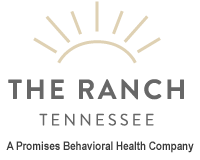In my journey of recovery from sexual addiction, setting and identifying clear bottom behaviors—i.e. bottom lines—was the first proactive step in the process, which came immediately after I went to my first recovery meeting. During my 20 years of sobriety from alcohol and substances, I had never encountered such a clear, practical and immediately helpful concept. The idea of bottom lines is implied throughout 12-step programs geared toward alcohol and substances, but in my experience, they were never called by the simple name “bottom lines.” In fact, the idea of setting bottom lines was so helpful that I knew right away I had a tool that was going to help me stay sober.
What Is a Bottom Line Behavior?
Simply put, a bottom line behavior is a behavior that, if engaged in, will compromise your sobriety. That’s a loaded statement that will have a different meaning for everyone who reads this, but that’s what bottom line means to me: a limit I set on myself so that I have a better chance of maintaining my sobriety. From the outside looking in, setting bottom lines can seem like a simple, straightforward process, especially for someone who’s recovering from any kind of sexual addiction. However, in my experience, going through the process of setting bottom lines brought up many issues.
Accessory Behaviors
At this point, I need to note that there’s another term that’s common in sexual recovery groups—accessory behaviors. In my journey toward recovery, it’s been helpful to consider accessory behaviors and bottom line behaviors as the same thing. Why? Because an accessory behavior, for me, starts the internal cascade that leads to crossing a bottom line behavior. I need a firm line in the sand that I clearly cannot cross: for that reason, accessory behaviors are bottom line behaviors. While this may not work for everyone, this is what has worked for me and kept me firmly on the path of recovery from sexual addiction.
My Bottom Lines
Here’s a list of sexual recovery bottom lines I set for myself after my first recovery meeting:
- No sex outside of a committed relationship
- No sex with someone who is married
- No sex on the first date
- No reaching out to former sex partners with a sexual agenda
- No sex-oriented conversations
- No sex-themed online chat rooms
- No “checking out women”—on the street, in the grocery store or anywhere
I’d like to take just a second to discuss that last one and use it as an example of why I merge accessory behaviors and bottom line behaviors. Before I entered recovery for sex addiction, my trips to the grocery store would always involve me seeing an attractive woman and then finding a reason to go down the aisle she was on—even though I didn’t need anything on that aisle. The simple act of changing my trajectory in the store would start a cascade of addictive, destructive thought patterns, and bam: there I was, feeding my addiction. Establishing this simple directive—no checking out women in the grocery store—was probably the simple most effective bottom line in my arsenal, because I had to practice it almost every day.
Staying Sober
Adhering to my bottom lines every day has been a crucial step in maintaining my sobriety. It’s important to keep in mind that bottom lines can change over time and transform—it’s all based on how you feel and avoiding things that start the addictive “cascade.” One last note: if you cross your bottom lines, be compassionate with yourself. Go to a meeting, talk to a recovery partner, write in your journal or practice a top line behavior. Just like in AA, the process of recovery from sexual addiction is something that happens one day at a time. If you slip, you have to forgive yourself and love yourself. Today always starts right now. By Angus Whyte



